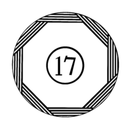The Things We Carry
First of all happy Wednesday! Before we get into today's blog post I wanted to mention that we have a news letter that will be starting to send out every Monday in June! So if you haven't yet signed up for the newsletter please feel free to do so. No spam, just 17th updates and a few short history lessons.
Now this week on the blog we have a Damian Niescior, most of you may know Damian from his work experience at Fort Ticonderoga in upstate New York, but now he serves as a Gallery Educator at the new Museum of the American Revolution in Old City, Philadelphia, PA, continuing to chat history to visitors. This blog post has been requested by some readers and is very informative in everything that Damian carries on his person to events has a purpose, can be easily stowed away in pockets, haversacks, and knapsacks, and nothing is there "just for looks". Enjoy the read!
Mary Sherlock - A follower attached to the 17th Regiment of Infantry
“They carried the sky. The whole atmosphere, they carried it, the humidity, the monsoons, the stink of fungus and decay, all of it, they carried gravity.”― Tim O'Brien, The Things They Carried
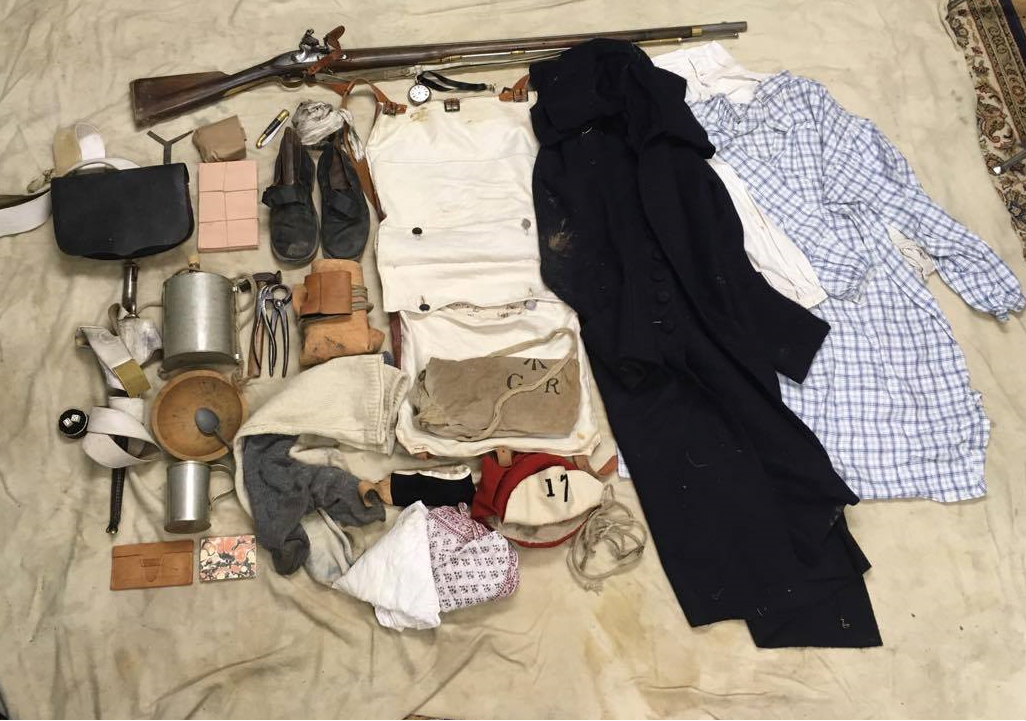
Throughout my time as a historical interpreter, both amateur and professional, I have been asked a fair amount on what I carry and why I carry it. I find it’s important to represent the soldiers as best we can as individuals, which includes minute details that may not even have a chance to see. These items also allow me to be self-sufficient while at events, keeping myself from needing to return to a vehicle. These items are both small and large, but all carry some significance to the interpretation of soldier life on campaign.
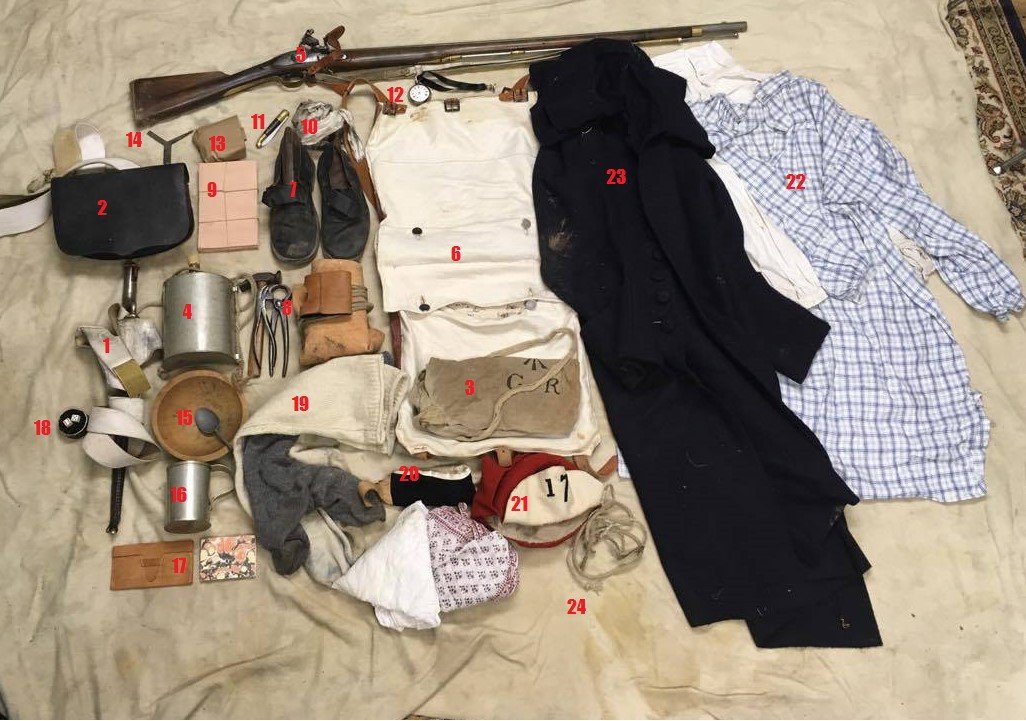
- The very first thing put on is the bayonet belt. It carries the sidearm, the bayonet, a triangular shaped blade of about 18 inches long. It is supported by the scabbard which sits in the belt itself. The buff leather belt is based off of several surviving originals, and although it is a waist belt, it is worn across the shoulder as a field modification to improve comfort.
- The next item we put on is the cartridge pouch. This pouch is a soft leather bag sewn with a hard leather flap to protect the cartridges inside. The cartridges sit in a wooden block, nailed into place by a series of small iron tacks, and can hold 21 cartridges. The white shoulder strap is, like the bayonet belt, made from buff leather. This pouch is of an older style, originally designed and used during the 7 years’ war, but then with a wider strap and extra square buckle. The pouch was modified to conform to the Royal Clothing Warrant of 1768. The 17th, months before the start of the war in 1775, ordered new cartridge pouches in an effort to replace the older outdated ones they were still carrying. Through the orderly books, although they had ordered the new pouches, they did not arrive in time for the 17th’s voyage to America in mid-1775.
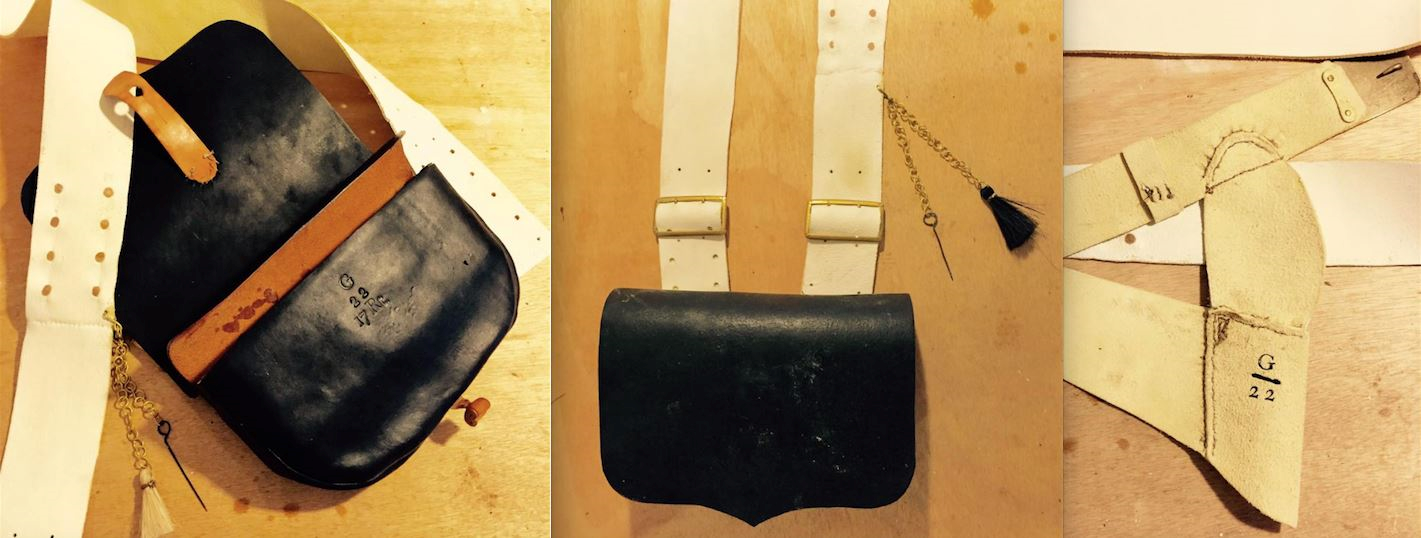
- Over the buff accoutrements, camp equipment is then placed, starting with the haversack. The haversack is a coarse linen bag, closed with two buttons on the side and suspended by a strap made from the same cloth. Its job is to hold the rations of each individual soldier. These rations were issued out once per every three days, which could include daily rations of one pound of flour or bread, one pound of beef or one half pound of pork, one quarter pint of peas, and one ounce of rice.
- Next is the canteen. The canteen is made from tinned iron, and suspended with a thin hemp rope. To help prevent rusting, beeswax is melted inside the canteen and shaken around to coat the interior. The canteen itself is made after an original, which had a tin cap for the spout as well. I, however, lost that cap a long time ago, and have since been replaced with a cork.
- The musket is the Short Land pattern, or second model, and also known as the Brown Bess. This musket is made from walnut, iron, steel, and brass. It features a 42 inch long barrel and its total weight is eight pounds. Completed with a buff leather sling to finish the look and assist with the carrying of the gun itself.
We have now reached the knapsack itself, which has many items inside it, each one I have carefully chosen to represent what a British soldier might carry in their pack.
- The knapsack itself is of a simple construction. It is primarily a hemp linen pack with two large pockets on each half. Each pocket is closed with two buttons made of pewter. The exterior of the knapsack is painted to repel rain and other weather. The knapsack is closed by three leather straps with conjoining buckles, and the pack itself is worn on the back with two shoulder straps made of leather as well. In the bottom half of the pack I keep tools and utensils, and clothing in the top half of the pack.
- An extra pair of shoes. At the height of the war, Britain was shipping nearly 40,000 pairs of shoes to supply its army with 2 pairs of shoes per man, per year. As I wear one pair of shoes on my feet, the others sit in my knapsack. There does seem to be some great relief when putting on dry shoes after walking in wet shoes all day.
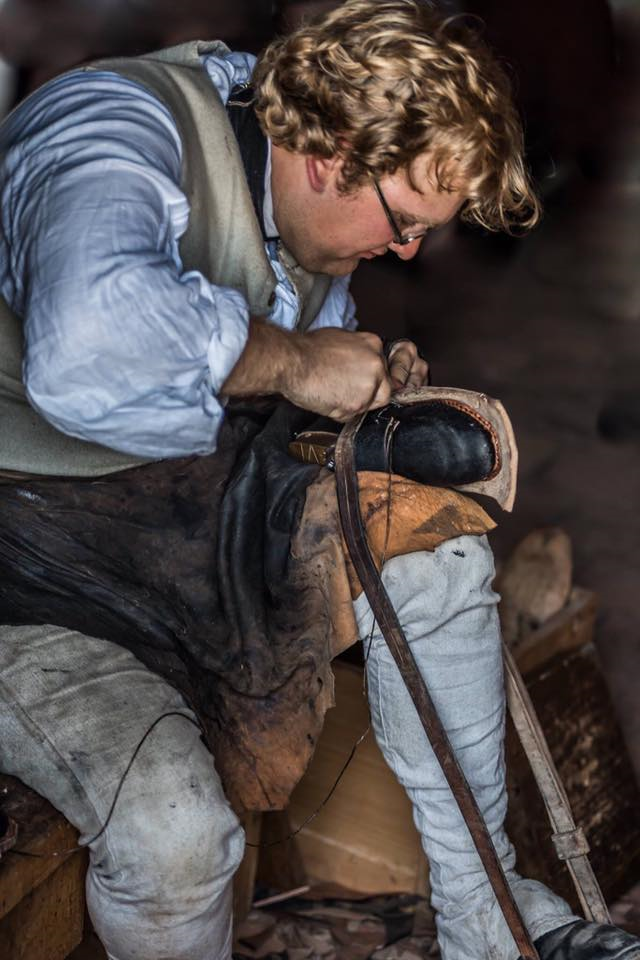
- Shoe tools; a hammer, lasting pliers, a set of pincers, leather palm, and awls wrapped up in a leather apron. While I was an interpreter at Fort Ticonderoga, I was an apprentice shoemaker studying under Mr. Pekar. Under his tutelage I developed some skills as a shoemaker, including the ability to repair shoes that had needed new soles and heels. The British army of the 18th Century contained a great deal of tradesmen, and many of them were shoemakers. These shoemakers, although soldiers first, facilitated the repair of shoes in the army.
- Donation soles. These soles, bound together with a simple tie, were issued to each man for each pair of shoes. It is typical for the average soldier to wear through soles in 3 months, but with two pairs of shoes per year means that the average soldier will wear each pair for six months. In order to bridge this gap, the British Army provides enough replacement leather for new soles and new heels for each pair. This is not in the assumption that each man has the skills required to repair his own shoes, but in the assumption that, due to the prolific nature of the shoemaking trade, each man will know a shoemaker in their own mess group or company willing to do the work.
- In order to keep the shoes I carry both presentable and healthy, a black polishing agent known as blackball is kept with my other tools. Blackball is a combination of charcoal, tallow and beeswax. The substance itself, when properly applied, returns a black finish to shoes while also keeping the leather from becoming too dry. Each soldier was issued an amount of blackball to maintain the shoes and black leather pouch.
- A small folding knife. This small folding knife has assisted me in more ways than I can mention. It has been a tool in cutting leather, a cooking utensil, a screwdriver and several other useful applications throughout the years.
- A pocket watch. Watches are especially useful to the life of a soldier. Although 18th century watches are impossibly complicated and expensive today, in the 18th century they were commonplace.
- Extra cartridges carried in a small brown package. In order to keep myself self-sufficient as the British Army could be, in addition to the 21 cartridges I carry in my pouch, I also carry additional ammunition in my knapsack.
- Musket tool. This reproduction of a musket tool is based off an original, and is used to maintain the musket. The tool itself is the only device needed when disassembling a great majority of the gun itself.
- A wooden bowl and pewter spoon. For my own comfort, I carry my own eating utensils. Although individual soldiers did carry their own bowls, soldiers would also eat out of the same kettle, removing the need to carry a bowl while on campaign.
- A tin cup. This reproduction of a cup, found at a British army encampment in North America, is a useful item to have when in the field. It can serve as both a drinking vessel and as a small cooking utensil as well. While I’ll admit that some of the worst coffee I have ever had, has been made in that cup, it is also the best coffee I have ever had.
- Wallet and notebook. Two items I have found to help remove myself from the 21st century when I am in the field. The wallet holds any cash I might use to purchase goods while at events, and the notebook allows me to jot down any thoughts or any notes I can review later.
- A pair of dice and snuff tin. We can’t have a good soldier impression without some vices thrown in! The dice I carry allows me to partake in a very old game known as Hazard. This game was very popular with soldiers; it required only a pair of dice and an understanding of the game itself. The snuff tin carries a small measure of snuff tobacco. Snuff is powdered tobacco taken through the nasal passage in very small quantities. Due to its unique method of inhalation, often the public use of snuff can come with strange looks from visitors.
- Two pairs of stockings. Each British soldier, in order to keep feet dry and healthy, would carry a number of extra stockings. I carry two extra on top of the pair I would be wearing, in total three pairs. There is something to be said of the quality of dry socks.
- Neckstock, one linen kerchief, and one cotton kerchief. A British soldier of the period would have a few items of neckwear. The one worn while on parade or battle, would be the neckstock. This garment is made of black velvet and finished with a false white shirt collar. This garment provides the soldier with a clean, military look. When the neckstock was not worn, softer kerchiefs and rollers could be worn.
- Fatigue cap. In order to preserve and protect the cocked hat from unnecessary damage, a cap is worn instead. This cap is based off of description and a few pictorial representations in paintings of the period. It is kept in my knapsack when not in use.
- Two shirts. These two shirts, I carry based on orders issued to the 17th at various points during the war, consist of one white and one made of check cloth. Like the extra shoes and stockings, it allows me to change into dry undergarments. This is especially useful during the hot days which can leave a shirt drenched with sweat.
- Watchcoats are heavy wool overcoats which assist a soldier while posted on sentry or picket duty. The British army issued these to regiments as about one watchcoat per 6 men. These garments were shared, and made to fit most sizes. I can tell you from personal experience, that extra layer of wool is a boon when enduring difficult weather.
- Last but not least is the blanket. It is rolled up and attached with ties to the top of the pack. This allows the weight to be more manageable, and to keep the pack from becoming too bloated.
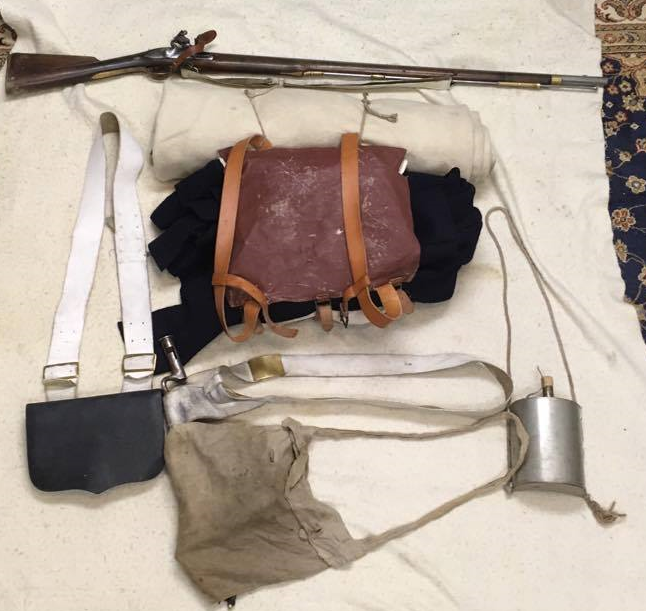
Each item is packed away carefully into the knapsack. Shirts are rolled up and pressed into the pack as efficiently as possible. The ending result is a tight, but efficient pack which weighs 20 pounds when fully loaded up. While these items all serve a purpose, each one a carefully chosen representative of items British soldiers of the period would have carried, this is as close I can come to understanding of what those soldiers would have endured. Those soldiers, serving thousands of miles away from home, would have carried a lot more than just items throughout the cities and wilderness of North America.
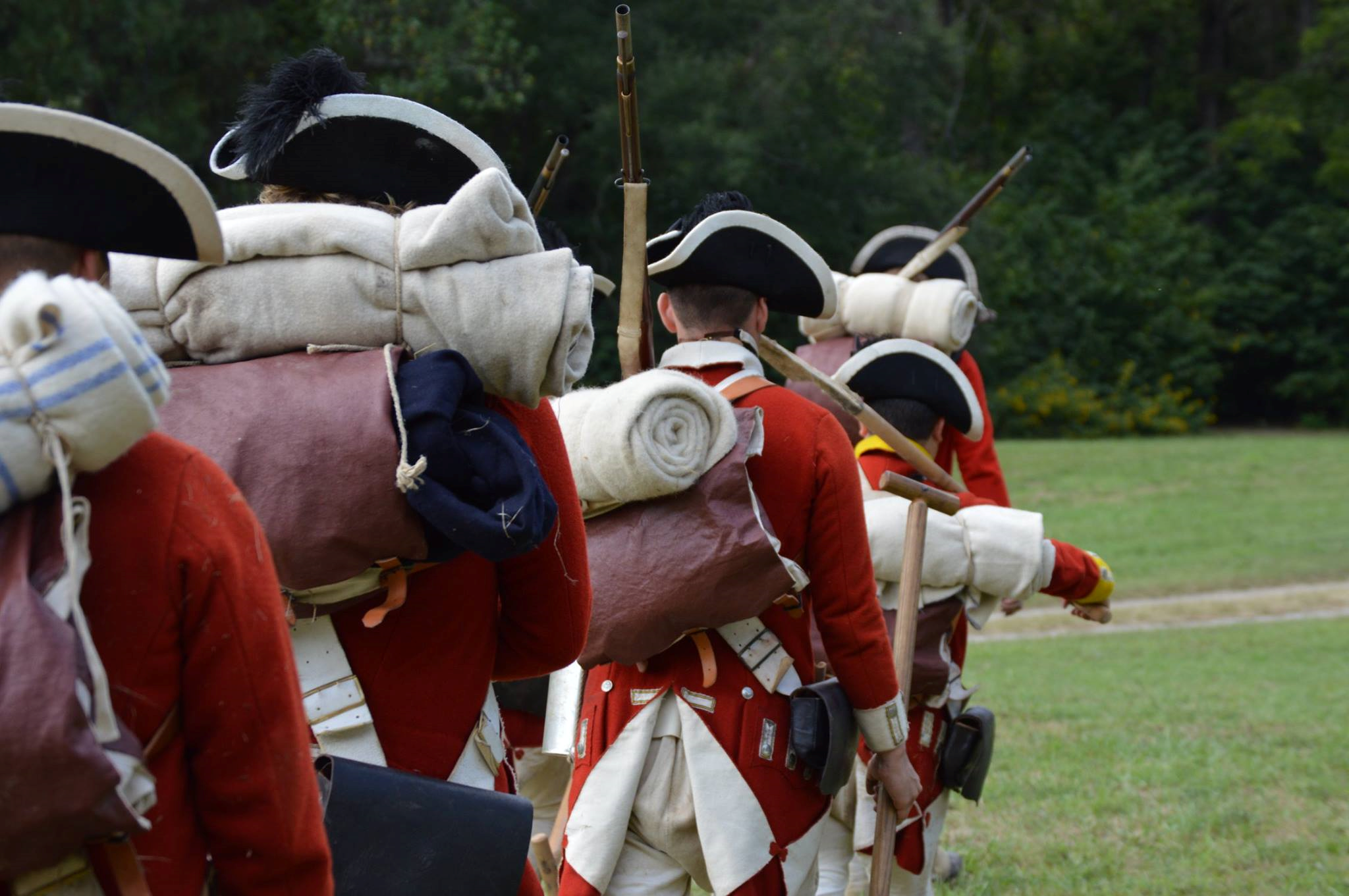
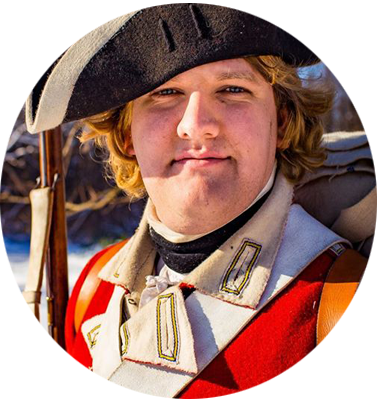
DAMIAN NIESCIORCurrently serves as Gallery Educator at the Museum of the American Revolution in Old City, Philadelphia, PA after serving as an interpreter at Fort Ticonderoga in Ticonderoga, New York. He has been reenacting and interpreting British soldier’s life since 2009.
